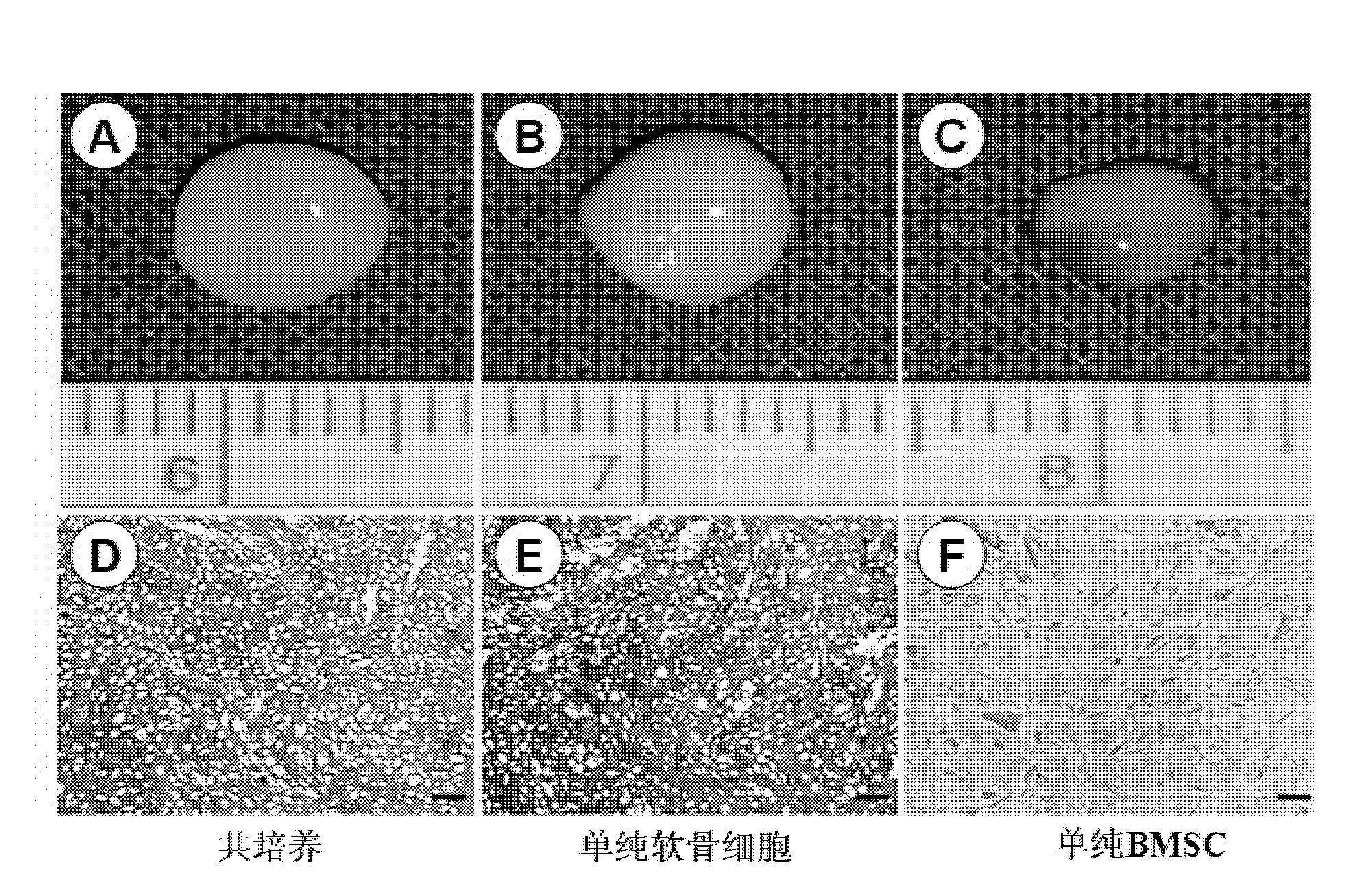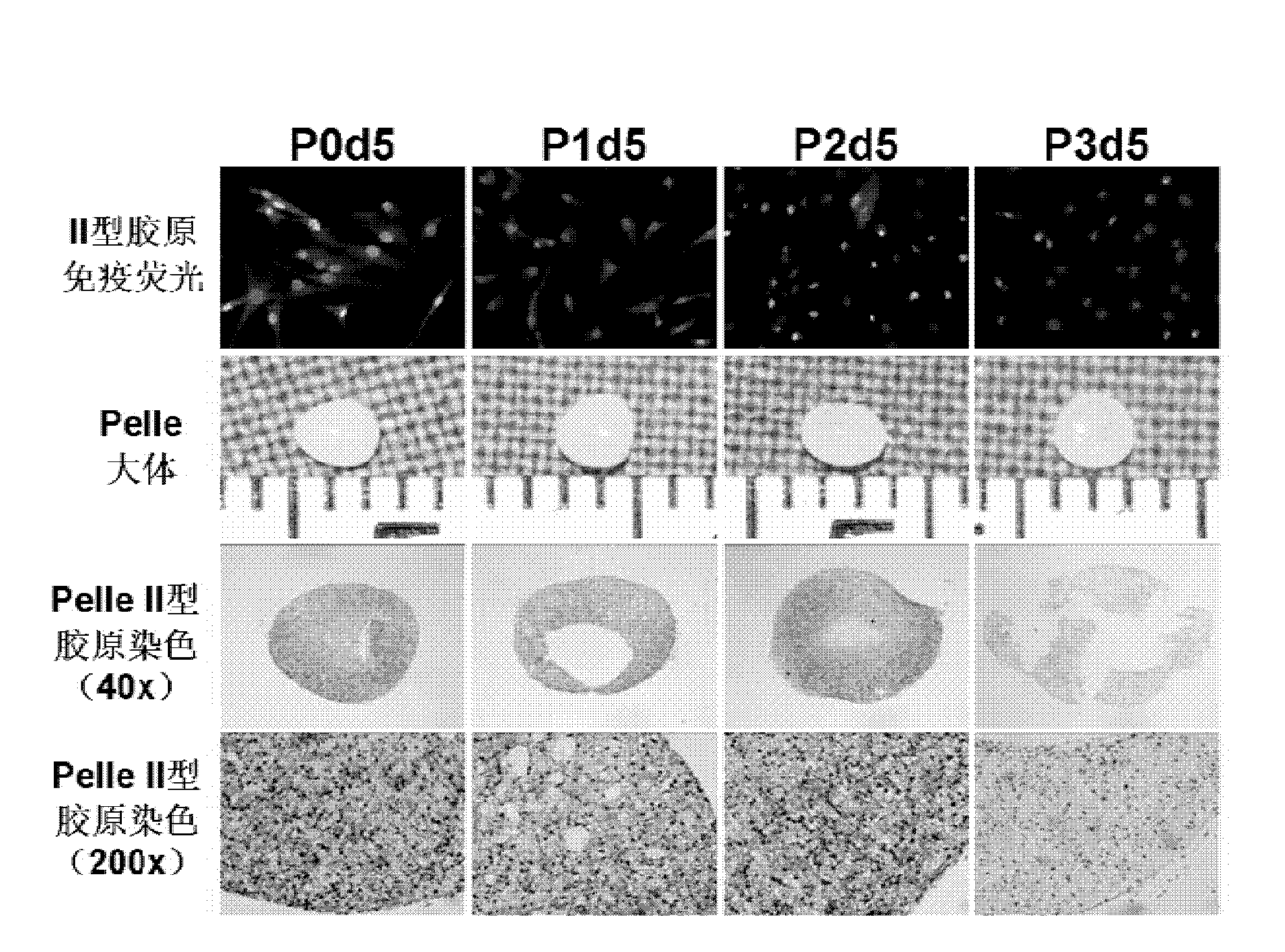Human residual ear cartilage stem cells, and method for constructing tissue engineering cartilages
A technique of chondrocyte and tissue engineering, applied in the fields of medicine and biomedical engineering
- Summary
- Abstract
- Description
- Claims
- Application Information
AI Technical Summary
Problems solved by technology
Method used
Image
Examples
preparation example Construction
[0063] The preparation method of the tissue-engineered cartilage of the present invention is simple and convenient. A certain amount of the human remnant ear chondrocytes is mixed with a pharmaceutically acceptable biodegradable material, and then the cartilage is induced in vitro. The method comprises the steps of:
[0064] In the first step, the cells derived from human residual ear cartilage are cultured and amplified, and subcultured to 1-8 generations;
[0065] In the second step, the above-mentioned subcultured and expanded cells are centrifuged to form pellets or high-density seeding to form cell membranes; or these cells are mixed with solid medically acceptable biodegradable materials to form cell-biomaterial composites thing;
[0066] In the third step, the agglomerates, membrane sheets or complexes are placed in chondrogenic induction medium for in vitro culture.
[0067] The method of planar culture expansion in the first step is, for example but not limited to, ...
Embodiment 1
[0103] Acquisition and culture of cartilage stem cells from human remnant ear
[0104] The cells are taken from the autologous residual ear cartilage tissue of patients with microtia. The donors are 8-30 years old, healthy, and free from malignant tumors, infectious diseases and autoimmune diseases.
[0105] (1) Material collection: Under aseptic conditions in the operating room, after satisfactory anesthesia, drape was routinely sterilized, and the patient's residual ear tissue was cut out, placed in a 50mL sterile centrifuge tube, soaked in 40mL sterile saline for storage and transport.
[0106] (2) Separation of residual ear chondrocytes: Under sterile conditions in an ultra-clean bench, completely remove the connective tissue and perichondrium around the residual ear cartilage, and chop the cartilage to 1-2mm 3 Small pieces were soaked in 0.25% chloramphenicol solution for 30-40min, rinsed with PBS, digested with 0.25% trypsin + 0.02% EDTA (Amresco, USA) in a constant temp...
Embodiment 2
[0112] Preparation of pellets from remnant ear cartilage stem cells
[0113] (1) Cell collection: when the monolayer cultured human residual ear chondrocytes reached 90% confluence, they were digested with 0.25% trypsin+0.02% EDTA. After the cells were collected, they were counted with a cell counter. Trypan blue staining showed that the number of viable cells was more than 90%. The cells were centrifuged at 1800 rpm for 8 min to precipitate the cells. The supernatant was discarded, and the cells were dispersed by shaking.
[0114] (2) Preparation of pellets: After collecting the cells, resuspend them in ordinary culture medium to prepare 0.4×10 pellets. 6 / ml of cell suspension. Take 1ml of the suspension in a 15ml centrifuge tube and centrifuge at 1000rpm for 5min to make a cell pellet. Slightly loosen the bottle cap and place at 37°C, 5% CO 2 , cultured in an incubator with saturated humidity, and then changed the medium every other day (ordinary culture medium or chondr...
PUM
 Login to View More
Login to View More Abstract
Description
Claims
Application Information
 Login to View More
Login to View More - R&D
- Intellectual Property
- Life Sciences
- Materials
- Tech Scout
- Unparalleled Data Quality
- Higher Quality Content
- 60% Fewer Hallucinations
Browse by: Latest US Patents, China's latest patents, Technical Efficacy Thesaurus, Application Domain, Technology Topic, Popular Technical Reports.
© 2025 PatSnap. All rights reserved.Legal|Privacy policy|Modern Slavery Act Transparency Statement|Sitemap|About US| Contact US: help@patsnap.com



